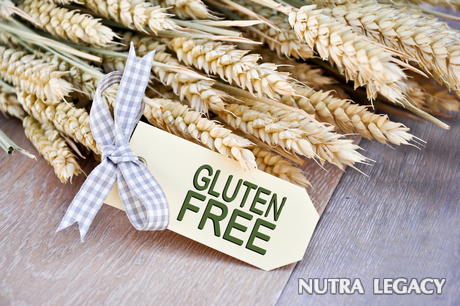FDA Regulates Labeling of Gluten-Free Products
At the grocery store, you won’t have to look hard to find a fellow shopper with a cartfull of products labeled “gluten-free,” “without gluten,” “free of gluten,” or “no gluten.” Over the last decade, packages with labels like these have popped up in green aisles and health food stores across the nation. And people are buying them.However, it wasn’t until Aug. 5, 2013 that the U.S. Food and Drug Administration (FDA) actually stipulated what “gluten-free” labels should mean.

First, let’s look at why having gluten-free products is important. Gluten isprotein that exists naturally in grains like wheat, rye, barley and their crossbreeds.Eliminating it from your diet isn’t necessarily healthier. However, people with celiac disease cannot eat gluten. The protein attacks the lining of their small intestines, which results in nutrients being improperly absorbed, and this can lead to other diseases like anemia, osteoporosis or diabetes.
Rhonda Kane, a registered dietitian and consumer safety officer at the FDA, discusses who really needs to eat gluten-free products (and who doesn’t) in an article called “A Glimpse at ‘Gluten-Free’ Food Labeling” on the FDA’s website:
“Eating gluten-free is not meant to be a diet craze, it’s a medical necessity for those who have celiac disease. There are no nutritional advantages for a person not sensitive to gluten to be on a gluten-free diet,” Kane says. “Those who are not sensitive to gluten have more flexibility and can choose from a greater variety of foods to achieve a balanced diet.”
So, for people who have celiac disease, this FDA regulation is a big deal, because eating gluten can cause them serious harm. Prior to the August 2013 regulation, there were no real repercussions for the FDA to enforce on products that were improperly labeled “gluten-free.” Manufacturers now have until Aug. 5, 2014 to comply with new regulation.
Curious as to what now makes a product gluten-free? Here are the FDA’s official requirements:
“In addition to limiting the unavoidable presence of gluten to less than 20 ppm, FDA will allow manufacturers to label a food ‘gluten-free’ if the food does not contain any of the following:
1. An ingredient that is any type of wheat, rye, barley or crossbreeds of these grains
2. An ingredient derived from these grains and that has not been processed to remove gluten
3. An ingredient derived from these grains and that has been processed to remove gluten, if it results in the food containing 20 or more parts per million (ppm) gluten”
Source: http://www.fda.gov/ForConsumers/ConsumerUpdates/ucm363069.htm
The information supplied in this article is not to be considered as medical advice and is for educational purposes only.
|
| ||||||||||||||





 24 Sep 2013
24 Sep 2013